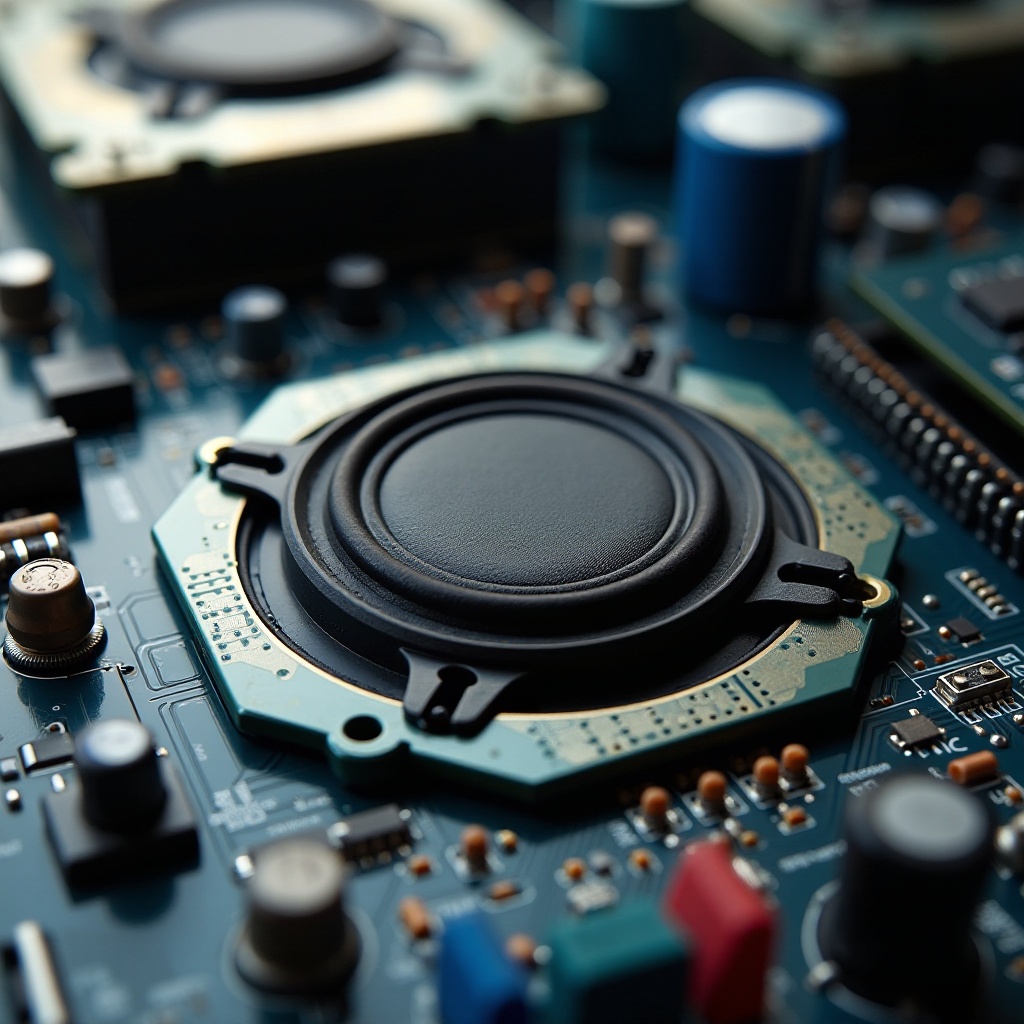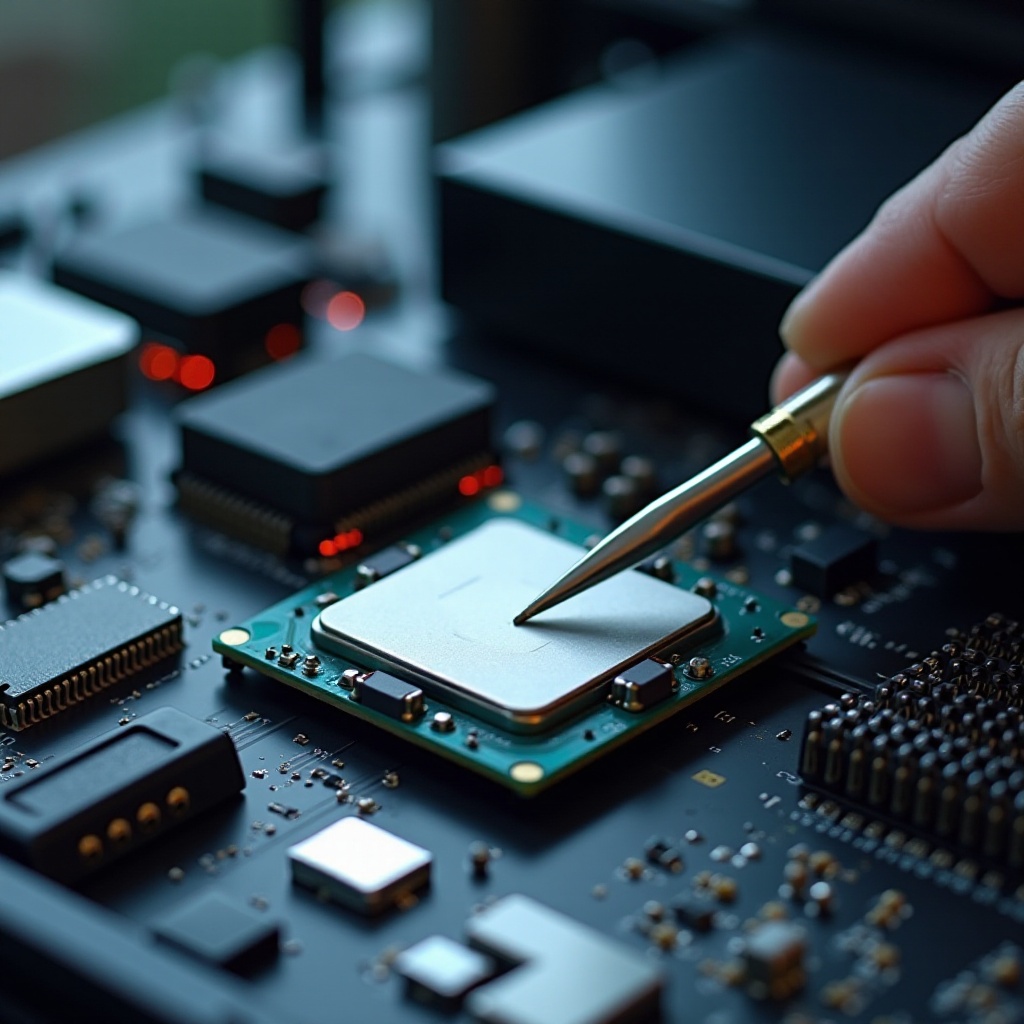Introduction
CPU speakers are essential for providing audio alerts and error codes that help users monitor their computer’s status. When these speakers malfunction, it can disrupt diagnostics and lead to confusion about the system’s health. Prompt action to resolve this issue is crucial for maintaining smooth computer operations. This guide covers common causes of CPU speaker problems and offers practical troubleshooting steps to regain your system’s audio feedback capabilities.

Understanding CPU Speakers
What Are CPU Speakers?
CPU speakers, often referred to as system speakers, are hardware components attached to the motherboard. They emit diagnostic tones and beeps during the boot-up process, indicating system performance and errors such as hardware malfunctions or memory issues. Unlike external speakers, these are integrated into the system primarily for technical diagnostics rather than audio entertainment.
Importance of CPU Speakers in Modern Computers
Despite the advancements in technology, CPU speakers remain vital for identifying and troubleshooting startup issues. They serve as an immediate source of feedback, especially during the initial boot sequence when software-based audio systems haven’t yet loaded. Understanding their role emphasizes why resolving any issues affecting their operation is essential for timely system maintenance.
Common Causes of CPU Speaker Issues
Hardware Connectivity Problems
Examining hardware connections is a fundamental troubleshooting step when CPU speakers don’t work. Loose or damaged cables, potentially disturbed during hardware upgrades or maintenance, can render the speaker non-functional. Securely reconnecting these cables ensures the speaker is effectively linked to the motherboard, enabling it to function properly.
Software and Driver Conflicts
Software conflicts or outdated drivers often underlie CPU speaker malfunctions. When drivers become obsolete or incompatible with system updates, communication between the operating system and hardware falters. Maintaining current driver updates helps prevent these issues, ensuring seamless audio functionality from your CPU speaker.
Incorrect BIOS Settings
Sometimes, BIOS settings inadvertently mute CPU speakers, particularly following hardware changes or system updates. Accessing the BIOS settings during startup allows users to verify and adjust configurations, ensuring that system alerts and speaker functions are enabled and properly calibrated.

Basic Troubleshooting Steps
Checking Physical Connections
Begin troubleshooting by inspecting all speaker-related connections. Make sure the speaker cable is firmly connected to the motherboard. Check for any visible damage or disconnections that may have occurred. Reinforcing these connections can often rectify non-responsiveness in CPU speakers.
Ensuring Correct Audio Settings in OS
Confirm that the operating system’s audio settings prioritize the system speaker. Access the sound settings to ensure the correct output device is selected and that the speaker isn’t muted or set to an inaudibly low volume. Modifying these settings might immediately restore the speaker’s function.
Restarting Your Computer
Rebooting the system can resolve temporary glitches that impede speaker operation. A fresh start often resets configurations and processes, providing a simple fix for various minor technical hiccups affecting CPU speaker performance.
Advanced Troubleshooting Techniques
Updating or Reinstalling Audio Drivers
If basic measures fail, look into updating or reinstalling audio drivers. Visit the motherboard manufacturer’s site to find the latest driver updates specific to your model. Managing drivers through the device manager allows you to uninstall outdated versions and reinstall the updated software, ensuring drivers are current and functional.
Configuring BIOS for Audio Output
The BIOS interface manages essential hardware settings including audio output configurations. Access the BIOS during your computer’s startup sequence to verify that relevant audio settings, particularly those regarding the CPU speaker, are enabled. Adjust and save any necessary changes to optimize audio alert functionality.
Addressing Software Conflicts
Booting in safe mode helps identify software conflicts by running the system with minimal drivers and programs. If the speaker works in safe mode, gradually re-enable applications to pinpoint any conflicts. This diagnostic approach isolates software issues impacting CPU speaker operations.
Exploring Alternative Solutions
Using External Speakers or Headphones
If internal troubleshooting fails, external speakers or headphones can temporarily replace CPU speakers for system audio alerts. Connect these devices to the appropriate output jack and adjust operating system settings to ensure they receive audio signals, providing an interim solution while persistent issues are investigated further.
Implementing Audio Alert Systems
Consider software audio alert systems as a backup for missing CPU speaker functions. These applications can customize alert volumes and types, efficiently notifying users of system statuses and errors until the hardware issue is resolved.

Long-term Maintenance Tips
Regular System Updates and Care
Ensure all hardware, software, and BIOS components are regularly updated to avoid compatibility issues that silence CPU speakers. Adopting a consistent maintenance schedule prevents potential conflicts and enhances overall system reliability.
Best Practices for Preventing Audio Issues
Establish routine maintenance that includes checking hardware connections and cleaning internal components to prevent dust buildup. Regular system diagnostics and monitoring help detect potential issues early, ensuring CPU speakers remain operational and effective.
Conclusion
Providing effective solutions and preventive care for CPU speaker issues ensures reliable audio diagnostics. By following these comprehensive troubleshooting steps, you’ll keep your computer’s alert capabilities robust and your system functioning at its best.
Frequently Asked Questions
Why is my CPU speaker not working after a Windows update?
A Windows update may alter audio settings or cause driver conflicts. Check and update your audio settings and drivers to resolve any issues.
Can a damaged speaker affect other computer components?
A damaged CPU speaker doesn’t typically impact other components. However, it may prevent receiving critical alerts, affecting overall system awareness.
How do I test if my CPU speaker is functioning properly?
Ensure the speaker’s connection is secure, then restart the computer and listen for beeps. Diagnostic software can also test for functionality.
